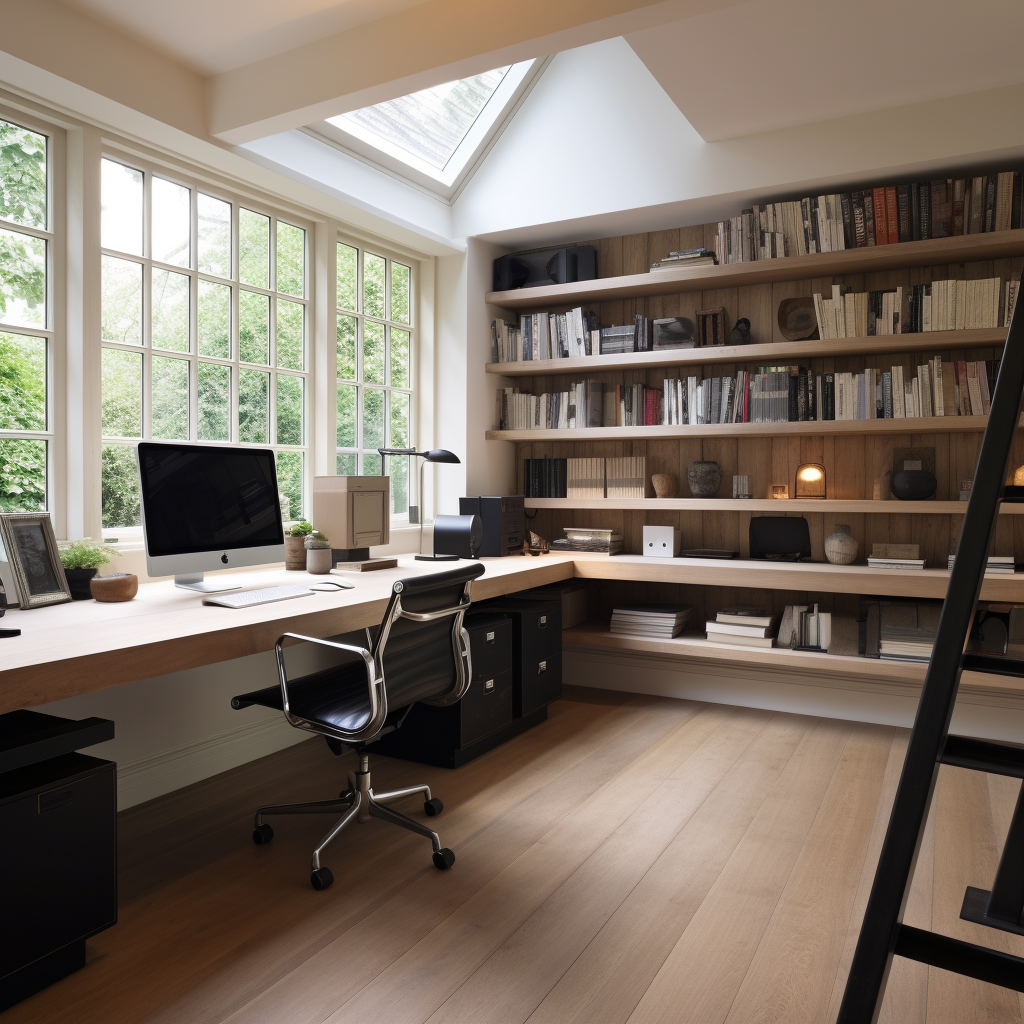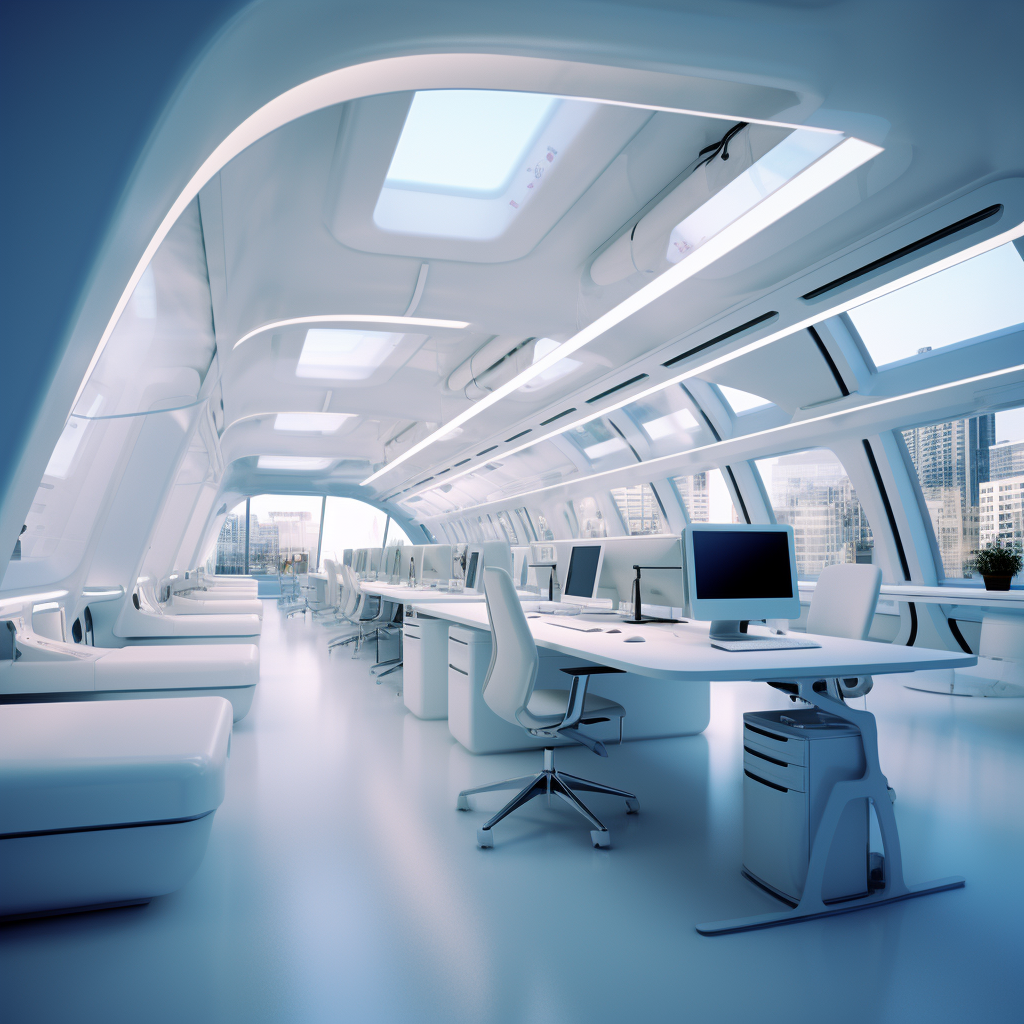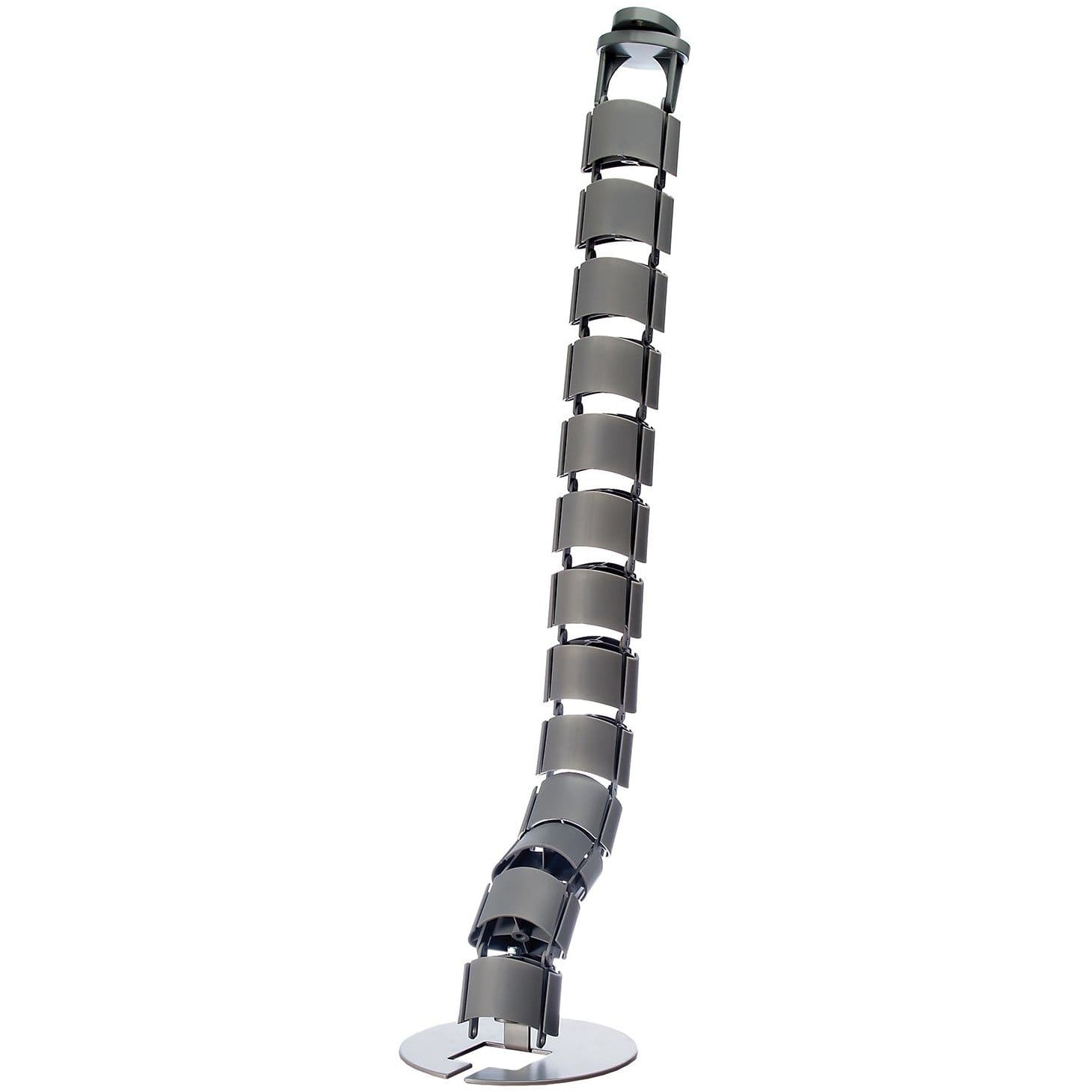
The Comprehensive Guide to Office Furniture: Enhancing Productivity and Comfort in the Workplace

The Power of Well-Designed Office Furniture
In the fast-paced world of business, productivity, efficiency, and a healthy work environment are more than just catchphrases; they are essential components that can define the success of an organization. As such, the importance of creating a workspace that supports these elements cannot be overstated. One critical, yet often overlooked aspect that plays a massive role in shaping this productive work environment is office furniture.

Office furniture is much more than just utilitarian components of a workspace. It has the power to create a mood, evoke emotions, and greatly influence behavior and performance. From fostering a team's creativity and collaboration to shaping the impressions of clients and visitors, the furniture you choose plays a critical role in the functioning of your business.
This comprehensive guide has been meticulously crafted to shed light on the vast and varied world of office furniture. The objective is to empower you, whether you're a business owner, an office manager, or an employee, with the knowledge and insights to make informed decisions about choosing and organizing office furniture.
Over the subsequent sections, we will delve deep into the world of office furniture. We will explore the essential components of office furniture, from desks and chairs to storage solutions and break room essentials, providing a detailed look at the types, benefits, and selection criteria for each.
We will also dive into the critical factors to consider while selecting office furniture. Topics such as the importance of ergonomics and space planning, the significance of durability and quality, strategies for budget planning, and aligning furniture with aesthetics and brand image will be discussed at length.
Additionally, we'll explore upcoming trends in office furniture, complete with case studies of businesses that have leveraged the power of well-designed office furniture to enhance their productivity and employee satisfaction.
The world of office furniture is fascinating, varied, and full of potential to transform workspaces into thriving hubs of productivity and creativity. Through this guide, we invite you to join us on a journey to discover, understand, and harness the power of well-designed office furniture to create a work environment that's comfortable, productive, and truly inspiring.
So, as you flip through the pages of this comprehensive guide, we hope that you find valuable insights, actionable tips, and most importantly, inspiration to create a workspace that is a vibrant blend of functionality, comfort, and style.
Welcome to our comprehensive guide to office furniture. Your journey towards a well-designed, productive, and comfortable workspace starts here!
The Significance of Office Furniture
A workspace is more than just a physical location where tasks are accomplished; it's an environment that can significantly influence productivity, creativity, and overall well-being. Central to creating such a conducive environment is the furniture that populates the office. In this section, we delve into the multifaceted significance of office furniture and its direct influence on an organization's performance.
Office Furniture and Productivity
Productivity is often the first factor business owners consider when setting up a workspace. However, its connection to office furniture can sometimes be overlooked. An appropriately furnished office, complete with comfortable, functional, and well-designed furniture, can boost productivity levels significantly.
For instance, ergonomic chairs and adjustable desks facilitate good posture and reduce physical strain, allowing employees to concentrate better on their tasks. Similarly, having enough storage facilities such as cabinets and shelves can lead to an organized workspace, thus reducing time wasted searching for documents or supplies.
Office Furniture and Employee Well-being
Office furniture plays a pivotal role in shaping the physical comfort and overall well-being of employees. Spending long hours on a chair that doesn't offer adequate support, or working at a desk that's too high or too low, can lead to numerous health issues, including back pain, neck strain, and carpal tunnel syndrome, among others.
Investing in ergonomic furniture, such as chairs with adjustable heights and backrests, or desks that allow for standing as well as sitting, can significantly alleviate these issues. Moreover, furniture that promotes comfort and well-being sends a clear message to employees that their health and safety are valued, thereby boosting morale and job satisfaction.
Office Furniture and Office Aesthetics
The visual appeal of an office is more than just a superficial aspect. The aesthetic environment of a workplace can influence the mood and energy levels of those working within it. Well-chosen office furniture that aligns with the company's brand image and complements the overall interior design can create an inviting and inspiring workspace.
High-quality office furniture can convey a sense of professionalism and commitment to excellence, thereby reinforcing a positive company image. It can also play a role in impressing clients, partners, and visitors, potentially leading to fruitful business relationships.
In conclusion, office furniture is far more than mere physical objects within a workspace. They are crucial elements that can boost productivity, promote employee well-being, and enhance office aesthetics. Therefore, investing in high-quality office furniture is not an expense, but rather a strategic investment towards building a successful and sustainable business.
In the next section, we will examine the various components of office furniture in detail, beginning the process of understanding what makes each piece unique and essential to an effective office environment. Stay tuned!
The Essential Components of Office Furniture
When it comes to setting up an efficient workspace, the importance of carefully chosen office furniture cannot be overstated. From desks and chairs that serve as primary workstations to storage solutions that keep the office organized, each component of office furniture plays a crucial role in shaping the work environment. In this section, we delve into the key components of office furniture, offering insights into their unique roles, types, and selection criteria.
Office Desks
Office desks serve as the central hub of work in any office setup. They can significantly impact the user's comfort, efficiency, and productivity levels.
There are various types of office desks available, such as:
-
Standard Desks: These desks are commonly used due to their simplicity and functionality. They typically include a flat surface for a computer and workspace, along with drawers for storage.
-
L-Shaped Desks: These desks offer additional workspace and are perfect for corner spaces.
-
Standing Desks: With a focus on ergonomics, standing desks allow users to alternate between sitting and standing, promoting better posture and reducing the risk of back pain.
When choosing an office desk, consider the nature of the work, available office space, and individual needs for storage and surface area. Also, read How to buy an office desk
Office Chairs
An office chair is another critical component that can directly influence an employee's comfort and productivity levels. Ergonomic chairs that offer good lumbar support, are adjustable in height, and have a comfortable seat and backrest are essential to prevent physical strain during long hours of work.
Types of office chairs can include task chairs, executive chairs, and ergonomic chairs, each offering different levels of support and comfort. The choice of chair should depend on the number of hours spent seated and the nature of the tasks performed. Read our full guide for some tips on how to buy office chairs.
Storage Solutions
A well-organized office is a productive office. To keep workspaces clutter-free, efficient storage solutions such as pedestals, filing cabinets, bookshelves, and storage units are essential. The choice of storage solution depends on the volume of files and supplies, the available office space, and the need for accessibility.
Conference Room Furniture
Conference rooms are spaces where ideas are exchanged, decisions are made, and collaborations are formed. Therefore, they need to be furnished thoughtfully. Essential pieces include a large table, comfortable chairs, and equipment stands or credenzas for presentation equipment.
Break Room Furniture
A well-equipped break room can serve as a refuge for employees to relax and rejuvenate during breaks. Comfortable seating, dining tables, and even recreational items like pool tables can significantly enhance the appeal of a break room.
In summary, each component of office furniture has a distinct role in shaping the office environment. Understanding their unique roles and selecting them judiciously is a crucial step towards creating a workspace that encourages productivity, comfort, and efficiency. Read more about types of office furniture.
In the following section, we'll delve into the key factors that you need to consider while selecting your office furniture. Stay tuned as we continue our exploration of the fascinating world of office furniture!
Factors to Consider While Selecting Office Furniture
Investing in office furniture is a strategic decision that can directly impact your organization's productivity and image. Therefore, it is not a task to be taken lightly. The choice of office furniture needs to be guided by careful consideration of several factors. This section presents a detailed discussion of these factors to help you make informed decisions while selecting office furniture.
Ergonomics
Ergonomics refers to the design of a workspace that maximizes productivity by reducing employee discomfort and fatigue. It's not just about buying ergonomic furniture but also about setting it up in a way that supports the natural human posture. An ergonomic chair would have adjustable height, armrests, and backrest, while an ergonomic desk would offer an appropriate height to prevent straining the neck and eyes. Remember, a healthy employee is a productive employee.
Space Planning
The size and layout of your office space will largely dictate the type and quantity of furniture you can accommodate. Conduct a detailed analysis of your office space, considering factors such as the number of employees, the nature of tasks performed, and the need for movement within the office. Ensure that the furniture you select fits comfortably within the office without making it look overcrowded or impeding movement. The less space you have, the more important this step is.
Durability and Quality
Office furniture is not something you'd want to replace frequently. Therefore, prioritize durability and quality while selecting your furniture. Look for furniture made from high-quality materials and crafted with excellence. While such furniture might seem expensive initially, they will prove to be cost-effective in the long run due to their longevity. Remember, good maintenance can increase any furnitures lifespan!
Budget
While it's important to invest in high-quality office furniture, it's also essential to do so within a defined budget. Determine your budget before you start shopping and stick to it. Look for furniture providers who offer a good balance of quality and cost. Remember, being cost-effective is not about buying the cheapest furniture but about getting the best value for your money.
Aesthetics and Brand Image
The style, color, and design of your office furniture should complement your office aesthetics and align with your brand image. It should create a visual harmony and project a professional image. For instance, if your brand personality is creative and vibrant, you could opt for furniture in bright colors and innovative designs. On the other hand, if your brand is more about elegance and sophistication, furniture in neutral tones and classic designs might be more suitable.
To sum up, selecting office furniture is a process that requires thoughtful consideration of several factors. Understanding these factors will enable you to choose furniture that not only serves your immediate needs but also contributes to your long-term business success. In the next section, we'll discuss future trends in office furniture, adding another layer to your understanding of this critical element of your workspace.
Future Trends in Office Furniture
The world of office furniture is dynamic and continually evolving. As work culture transforms and technology advances, so do the needs and expectations of office environments. Understanding these changes and upcoming trends can be invaluable when planning your office space. This section highlights some of the future trends in office furniture that you should be aware of.
Shift Towards More Flexible and Modular Furniture
As organizations embrace flexible work arrangements and hybrid work models, office furniture will need to adapt. Modular furniture that can be easily reconfigured to accommodate various work scenarios is expected to gain popularity. Such furniture can cater to different tasks, team sizes, and work modes, making them an excellent investment for the future.
Technological Integrations in Office Furniture
In an increasingly digital work environment, office furniture with integrated technology is likely to become more prevalent. Desks with built-in charging stations, chairs with sensors for posture correction, and smart lockers are some examples. These integrations aim to increase convenience and improve productivity, making them an exciting development to look forward to.
Rise in Demand for Sustainable and Eco-friendly Furniture
Sustainability is no longer just a trend; it's a necessity. As more businesses adopt eco-friendly practices, the demand for sustainable office furniture is on the rise. Furniture made from recycled materials, sustainably sourced wood, or those designed with energy-efficient manufacturing processes will be highly sought after. Investing in sustainable furniture can be a powerful way to demonstrate your organization's commitment to environmental responsibility.
Focus on Employee Well-being
Office furniture designed with an emphasis on employee well-being is set to become the norm rather than the exception. Ergonomic design, sit-stand desks, and elements promoting physical activity will be prominent features of office furniture. Additionally, furniture pieces that contribute to mental well-being, like relaxation zones or quiet corners, are likely to gain popularity.
In conclusion, the future of office furniture looks promising and exciting. By staying informed about these trends, you can make forward-thinking decisions that will keep your workspace relevant and conducive to productivity and well-being. In the next section, we will present a few case studies showcasing how businesses have enhanced productivity and employee satisfaction through strategic office furniture choices. Stay tuned!
Conclusion
In today's competitive business landscape, the role of office furniture extends far beyond simple utility. The right office furniture can enhance productivity, foster well-being, and create an office environment that aligns with your brand's image and values. Understanding the significance of office furniture, its key components, the factors to consider while selecting it, and the emerging trends can empower you to make informed decisions that contribute to your organization's success.
The selection of office furniture is a process that requires careful thought and strategic planning. Prioritizing ergonomics, considering the layout of your office, keeping in mind the durability and quality of the furniture, aligning with your budget, and ensuring that the aesthetic complements your brand image are all key considerations in this process. There is also a number of dos and don'ts when buying office furniture.
Emerging trends in office furniture also offer exciting possibilities. From flexible and modular furniture that adapt to varied work scenarios, to technologically integrated pieces that bring convenience at your fingertips, and sustainable options that reflect your commitment to environmental responsibility – the future of office furniture holds immense potential.
In conclusion, office furniture is not just an operational requirement but a strategic asset that can significantly impact your organization's performance and image. Investing time, effort, and resources in choosing the right office furniture is indeed a wise and worthwhile decision. Here's to creating workspaces that inspire, comfort, and enhance productivity!









